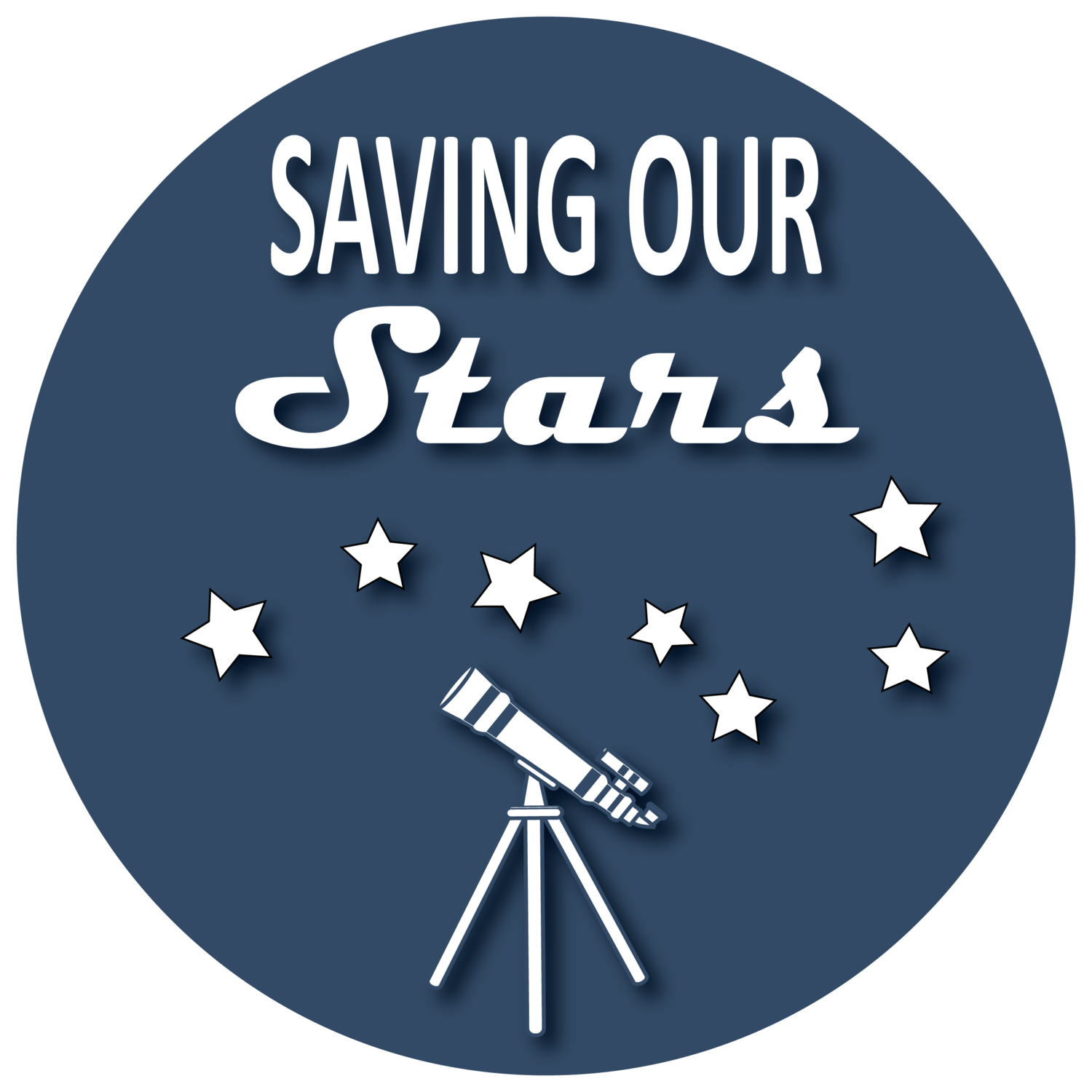Dark-Sky Resources
Welcome! If one of these pages doesn't have what you're looking for, please contact me, and I will try to help. If you find them helpful, I would love to know that as well. With your feedback, I can improve this site. :)
For the most recent Saving Our Stars' newsletter, click here.
Thank you for your interest in dark skies and fighting light pollution!
On this page, you will find:
Lighting Basics
Organizations
Videos
Dark-Sky Places
For the following, please click the link.
Streetlighting
Billboards
Sports & Recreational Lighting
Oil & Gas Fields
Landscaping
Dark-Sky Fixtures
Dark-Sky Shields
Indoor Lighting & Electronics
PC Amber LEDs
Landscape & Residential LEDs
Indoor Amber LEDs
DARK-SKY LIGHTING BASICS
AMBER COLORED LIGHT
Choose amber colored light, which will have less green and blue light (white light has more blue).
We want to minimize blue light emissions, as blue light scatters in the atmosphere.
It's also best to minimize green emissions.
Please see Flagstaff Dark Skies Coalition's explanation for why color is so important!
For outside lighting, choose amber LEDs. yellow CFLs or incandescent, including Halogen. I focus on the color amber, because most people will be using LEDs, and with LEDs, amber is our best choice, as yellow LEDs are often warm white, and we want to avoid warm white.
If you must choose a warm white LED, choose a Correlated Color Temperature (CCT) of 2700 Kelvin or less (the lower the number, the better, as there is less white/blue light), and be sure to choose a low wattage. Note that 2700K still has a lot of harmful blue light. 2200K or less is preferred, but Amber LEDs are best.
FULLY SHIELDED ON THE TOP AND SIDES
We want light to shine down and not to the sides or up to the sky.
Try to avoid fixtures with glass or materials below the lightbulb, even if they are considered dark-sky friendly, as these can get dirty, attract spider webs, etc., which can all cause light to reflect (thank you for teaching me this Christopher Kyba).
REDUCED IN BRIGHTNESS
It's especially important that white LEDs (rich in blue light) be reduced in lumen output to less than 50%. Blue light is seen so well by the human eye that a reduction in brightness is normally not even noticed. Only use the amount of light needed, because with lighting, "less is more." When too much is used, it creates glare, harsh shadows and can actually make it harder to see, all of which makes us less safe. See this great article titled Light Pollution Endangers Our Security and Our Safety.
LIGHTS ONLY ON WHERE OR WHEN NECESSARY.
Use timers, motion detector lights, or simply turn off unnecessary light.
Keep your blinds and shades closed to keep indoor light from spreading outdoors.
MORE DARK-SKY RESOURCES
Photo by Alexander Slattery on Unsplash
Now that you've gone over the basics of dark-sky lighting, you can explore further with the fabulous resources, articles, etc. offered by the below dark-sky organizations, and be sure to google for astronomy or dark-sky lighting organizations in your local area and state.
The Consortium for Dark Sky Studies as well as their Journal of Dark Sky Studies.
VIDEOS
De-Light the Night (Light Pollution Solutions) | Diane Turnshek | TEDxPittsburgh
Where Are the Stars? See How Light Pollution Affects Night Skies | Short Film Showcase
Light Pollution 2: Dark Sky Lighting (Thank you Daniell Lewis of the Novel Allies channel for the mention and for spreading the word!)
DARK SKY PLACES
Light pollution maps, such as Dark Site Finder, Light Pollution Map, and The New World Atlas of Artificial Sky Brightness, are great resources for determining the levels of light pollution across the globe. There is also a Dark Sky Finder app.
For places under dark-skies using dark-sky lighting, find an International Dark Sky Place near you. You can also check bortle scales. For example, if you're in Texas, checking the bortle scale of Texas parks will show you their light pollution levels.
If you're not a camper, I recommend searching the dark sky areas of google map for hotels, inns, B&Bs, or any website with a search by map feature, such as bedandbreakfast.com, and you might be surprised to find a hidden jewel under dark skies!
Always be aware of your surroundings, be safe and have fun!
How to help
Be sure to visit the How to Help page for resources on fighting the installation of white LED streetlights, sample letters for contacting your city officials, signing light pollution petitions, outreach photos, creating a lighting ordinance in your town, learning how your town or neighborhood could become dark sky certified, and more!


